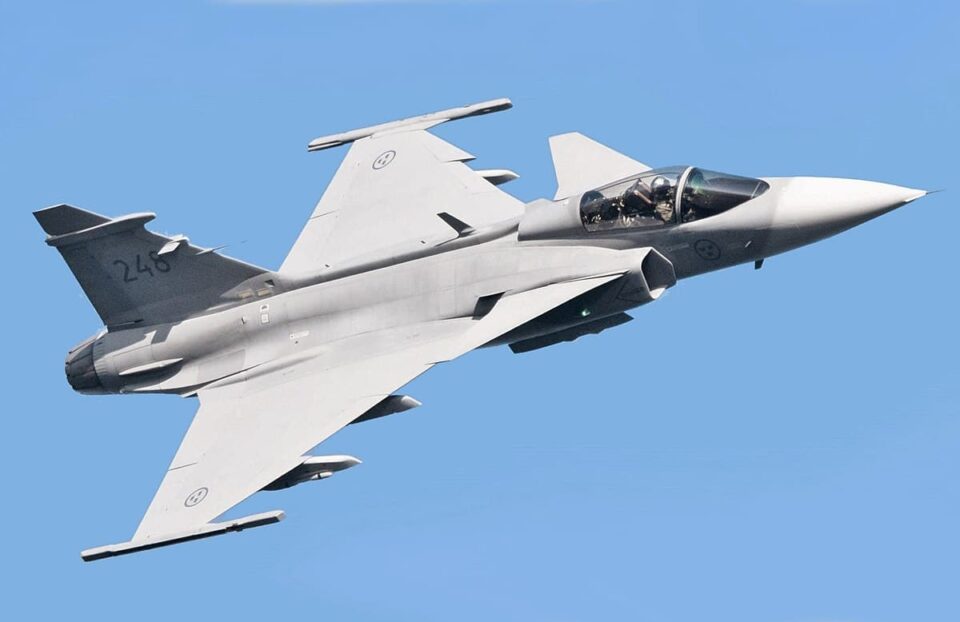Aerospace
Philippines Considering Swedish Gripen C Over India’s Tejas Offer

The Philippines is currently contemplating the acquisition of the Swedish Gripen C fighter jet instead of accepting India’s offer of the Tejas aircraft. This decision marks a significant shift in the country’s defense procurement strategy and is attributed to several key factors.
For the second time in a row, HAL has already lost a tender for the Malaysian Air Force fighter aircraft contest. HAL has provided the Philippine defense department with a light utility helicopter, thus the country and HAL already have good ties. However, the Philippines may be uninterested in the Tejas aircraft.
[adinserter block=”7″]
HAL is improving its Tejas Mark2 aircraft, which may see some foreign demand due to its latest avionics, fighting capabilities, mid-air refuels, and other features. Tejas aircraft is also the most cost-effective option for any defense force.
Firstly, the Gripen C, manufactured by Saab, is renowned for its advanced capabilities and superior performance in aerial combat. The aircraft boasts cutting-edge avionics, a powerful engine, and a robust weapons system, making it a formidable choice for the Philippine Air Force (PAF). Gripen C’s proven track record in international operations and its compatibility with NATO standards further bolster its appeal.
[adinserter block=”7″]
The main factors influencing the PAF’s decision-making process are looked at in this analysis, with a focus on the cost-effectiveness and advantages of the Gripen C/D over the HAL Tejas. Stockholm is offering a group of Gripen C and D fighters (single- and two-seat versions) that have been modified with fifth-generation electronics and are known informally as standard “C+” aircraft. The aircraft might be used or even brand-new like Croatia was offered to replace its MiG-21s.
The cost-effectiveness of the available solutions is a key factor to take into account because of the PAF’s financial limitations. Due to its reduced pricing compared to the HAL Tejas, Saab’s supply of used Gripen C/D aircraft presents an appealing prospect. By choosing the Gripen C/D, the Philippines may expand its fleet of fighter aircraft while still staying within its budgetary constraints, significantly enhancing its defense capabilities.
Gripen C’s emphasis on cutting-edge technology, especially its electronic warfare capabilities and network-centric warfare characteristics, is in line with the Philippines’ goal of creating an up-to-date, technologically advanced armed forces. The Philippines can greatly improve its defense capabilities by procuring the Gripen C, protecting its national security and territorial integrity.

Aerospace
Boeing Transfers Rocket Stage to NASA, Paving Way for Human Moon Mission

Boeing has achieved a significant milestone by providing NASA with the second core stage of the Space Launch System (SLS) rocket.
This crucial component, crafted at NASA’s Michoud Assembly Facility (MAF), is set to propel the Artemis II crew into lunar orbit, marking humanity’s return to deep space after a 50-year hiatus.
The monumental Boeing-built rocket stage, the largest element of the Artemis II mission, will embark on a journey aboard the Pegasus barge, traveling 900 miles to NASA’s Kennedy Space Center.
Comparison of two legendary aircraft B777x vs B747 aircraft:Click here
Upon arrival, it will be meticulously integrated with other essential Artemis II components, including the upper stage, solid rocket boosters, and NASA’s Orion spacecraft within the iconic Vehicle Assembly Building. This intricate integration process is a vital step toward the eagerly anticipated Artemis II launch, slated for 2025.
“Boeing-built products helped land humankind on the moon in 1969, and we’re proud to continue that legacy through the Artemis generation,” remarked Dave Dutcher, vice president and program manager for Boeing’s SLS program. “Together, with NASA and our industry partners and suppliers, we are building the world’s most capable rocket and paving the way to deep space through America’s rocket factory in New Orleans.”
NASA, Lockheed Martin Reveal X-59 Quiet Supersonic Aircraft:Click here
The delivery of Core Stage 2 marks a significant achievement in the evolution of the SLS rocket. Towering over 200 feet and powered by four RS-25 engines, this core stage, coupled with two solid-fueled booster rockets, will generate a staggering 8.8 million pounds of thrust. This immense power is crucial to launching Artemis II and future missions into the vast expanse of space.
The SLS rocket stands unparalleled in its capability to transport both crew and substantial cargo to the moon and beyond in a single launch. Its extraordinary capacity will facilitate the delivery of human-rated spacecraft, habitats, and scientific missions to destinations including the moon and Mars, ushering in a new era of space exploration.
-

 Travel1 week ago
Travel1 week agoAir India to Expand US Operations with Three New Routes After a Decade
-

 Travel2 weeks ago
Travel2 weeks agoWhy We Should Avoid These Stamps in a Passport
-

 Airlines1 month ago
Airlines1 month agoInvestigations Reveal Fake Chinese Titanium in Boeing and Airbus Jets
-

 Tech4 weeks ago
Tech4 weeks agoChina’s CATL Plans 1,800-Mile Electric Plane Launch by 2027
-

 Airport3 days ago
Airport3 days agoTop 10 Largest Airports in the World by Size
-

 Aerospace4 weeks ago
Aerospace4 weeks agoChina’s Fighter Jets Turn Wings into Autonomous Drones
-

 Airlines4 days ago
Airlines4 days agoAir India Rolls Out A350s for Delhi-New York JFK and Newark Routes
-

 Defence3 weeks ago
Defence3 weeks agoBoeing Enhances Chinook with New Engines and Block II Upgrades at $96 Million







